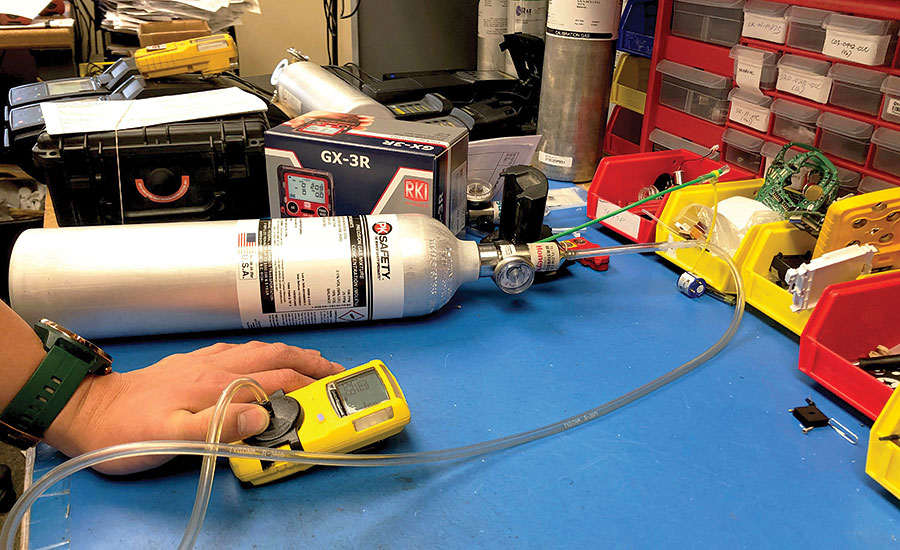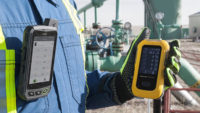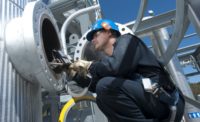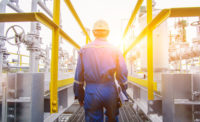When monitoring your work environment for toxic gases, you need to make sure your monitor is properly calibrated for your target gas, such as chlorine, carbon monoxide, or your readings may be inaccurate. To properly calibrate your monitor, you’ll need to use a specific concentration of the gas you’re trying to detect. This is known as a “calibration gas.” Calibration gases come in disposable or non-refillable cylinders that are usually made of steel or aluminum.
However, it’s important to note that calibration gases do have a shelf life, just like other perishable products. If the gas is expired, you won’t be able to properly calibrate your monitor, which can lead to inaccurate results. It’s best to check the expiration date before calibrating your monitor. You should also replace your calibration gases according to the manufacturer’s recommendations.
Learn about the shelf life of calibration gases, including both reactive and non-reactive gas mixtures, so you can use your gas detection equipment properly.
What are calibration gases?
When calibrating a gas detector, it is critical to provide a known reference point for the instrument to base measurements on. The sophisticated electronics on current gas detectors are able to “auto-calibrate” the sensors if presented with the manufacturer specified known starting point. For instance, a cylinder of cal gas may state that it contains 10 PPM (parts per million) of CO (carbon monoxide). For a certain brand of gas detector, this may be the specified starting point. It is important to purchase the correct gas for your detector.
It’s always best to calibrate your monitor at the start of every shift. To get started, using a calibration gas regulator, you’ll need to flow the calibration gas into the monitor. This exposes the sensors of the monitor to the test gas. You will then compare the readings on the monitor to the contents of the calibration gas to make sure they are accurate.
Following the manufacturer’s calibration process, if the detector fails to calibrate or the results do not match what’s listed on the calibration gas cylinder, you will need to reset and re-zero the monitor before trying again.
Reactive vs. non-reactive gas mixtures
It’s important to note that there are two different kinds of calibration gases, including reactive and non-reactive gas mixtures, and each comes with their own shelf life.
Reactive calibration gases
Reactive gases are considered much more volatile than their non-reactive counterparts. These gases tend to be unstable in certain conditions and may react to other materials in the air, such as moisture, oxygen, or other chemicals. Reactive gases include hydrogen sulfide, chlorine, sulfur dioxide, ammonia, hydrogen chloride, and other reactive elements.
Reactive calibration gas mixtures are typically packaged in aluminum cylinders and are treated, or passivated, by a special process that reduces the reactivity of the mixture. This ensures that the gas will remain stable in the field. However, due to the volatile nature of these gases, they usually have a shelf life ranging from 8 to 12 months.
Once the mixture has passed its shelf life, the concentration of the target gas will start to decrease and may eventually disappear entirely.
Non-reactive gas mixtures
Non-reactive gas mixtures do not contain reactive elements and are considered much more stable in most conditions. They are not affected by the presence of oxygen, moisture, and other chemicals, which means they do need to be treated or passivated. Non-reactive gas mixtures include alkene or alkene hydrocarbons (methane, ethane, propane, hexane, isobutylene, etc.), nitrogen, hydrogen, carbon monoxide, carbon dioxide, and other non-reactive elements.
Non-reactive gas mixtures typically come in steel cylinders. Since they don’t have to be treated or passivated, they tend to have a shelf life of three years.
Making the most of your calibration gases
It’s best to take some precautions when using calibration gases in the field.
For one, it’s important to point out that all calibration gases come with warranties from the manufacturer, which includes a “best if used by” date. You should never use gas mixtures once they’ve passed this date. Get in the habit of checking the expiration date before heading out into the field. You don’t want to show up at the job site only to discover that your cylinders have expired.
If you can’t find the expiration date or you’re not sure if your gases have passed their shelf life, you can always contact the manufacturer for more information.
You should also keep track of and itemize your calibration gases. Take note of the day you ordered the gas online and when it arrived at your facility. Refer to this information when checking the expiration date on your gases to make sure they are still effective.
Also record and label the properties of these gases, including whether they are reactive or non-reactive, flammable, highly pressurized, and other related hazards. Don’t forget to include proper usage guidelines and safety information in the event of exposure. This will help your team handle these gases with care on the job.
Avoid letting your test gas fall into the wrong hands. Only trained personnel should use calibration gases in the field. A slight error could put your entire team at risk, so make sure everyone knows how to use this equipment.
Physically inspect your calibration gases before utilizing them in the field. Look out for scratched or worn labels, cracks, leaks, and other signs of damage. You should never try to repair or reuse these cylinders.
Storing your calibration gases
The shelf life of these gases often depends on a variety of factors, including how and where you store them. It’s best to store them away from high-traffic areas to reduce the chances of damage. They should be kept in a temperature-controlled environment, so keep them away from open doors and passageways. Use mounting brackets to keep your test gases in place. You should never slide, toss, or drag your cylinders. The gases shouldn’t move around or knock into each other during transit.
Create a first-in-last-out storage system so that your team pulls out the oldest cylinders first. This will help you make the most of your safety equipment, instead of letting perfectly good gases expire. Refer to this information when storing your test gases and calibrating your monitors.



